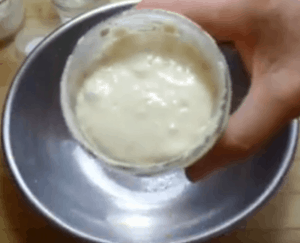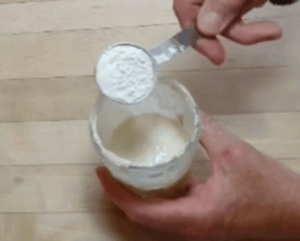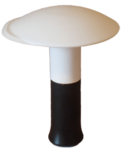 Bread starter goes by many names: Levain, Poolish, Chef, Mother, Sponge, Sourdough Starter and sometimes people use these names for very specific variations of dough leaveners. All of them are flour and water mixtures infused with naturally occurring yeast and beneficial microbes that will multiply with the addition of flour and water. They can be kept going in your refrigerator for years and years. Here I’m just using the term sourdough starter for making sourdough bread. We may not see the yeasts and microbes in the air all around us, but they are there and we can invite them into a bowl of flour and water to make an easy sourdough starter for making bread.
Bread starter goes by many names: Levain, Poolish, Chef, Mother, Sponge, Sourdough Starter and sometimes people use these names for very specific variations of dough leaveners. All of them are flour and water mixtures infused with naturally occurring yeast and beneficial microbes that will multiply with the addition of flour and water. They can be kept going in your refrigerator for years and years. Here I’m just using the term sourdough starter for making sourdough bread. We may not see the yeasts and microbes in the air all around us, but they are there and we can invite them into a bowl of flour and water to make an easy sourdough starter for making bread.
Homemade Sourdough Starter
This bread starter recipe is simple, but it takes 5 or 6 days to complete. Yeast from the air will populate and reproduce in a flour and water mixture right in your own kitchen. Making one is like conducting a small scale biology project at home. It’s interesting to watch and connects you to the natural world in a way we don’t often think about and to the ancient world too, since this is the earliest kind of bread. Try it if you’re so inclined.
To begin, thoroughly clean a small bowl. Add ¼ cup of water (it can be tap water at room temperature) and ¼ cup of flour to it. I use a white flour sourdough starter, but it can also be made with whole wheat flour. Stir the flour and water together and cover it loosely with plastic wrap. You don’t want to seal the bowl because you need air circulating over the flour water mixture. Everyday thereafter, remove half the mixture and add equal amounts of fresh flour and water. Within a few days, you will see air bubbles forming in the starter. These will increase everyday. The sourdough starter is ready to use when it has developed a pleasing sourness. Once it’s completed, transfer the starter to a small jar with a lid. Every once in a while transfer the starter to a clean jar.
Feeding Sourdough Starter
 Sour dough starter can be stored in the refrigerator long term. I use my sourdough starter weekly in general, so it’s frequently renewed, but I have also left it untouched for three weeks and it was still alive and usable. As for feeding sourdough starter, I like to store it in a 1 to 1 ratio of flour and water by volume. This allows me to add a lot of flour to the starter when I take it out to use it for making bread. After a couple of hours, the rapidly reproducing starter has a freshness that makes for a less acidic, milder taste to the bread. However, if you’re only going to use your starter once a month or so, it’s probably better to store it as a thicker mixture, which provides more food for the microorganisms. If you do use the 1 to 1 ratio, and you see a pool of liquid on top, it can be poured off before adding more water and flour. If the starter becomes too thick, you can add water to it.
Sour dough starter can be stored in the refrigerator long term. I use my sourdough starter weekly in general, so it’s frequently renewed, but I have also left it untouched for three weeks and it was still alive and usable. As for feeding sourdough starter, I like to store it in a 1 to 1 ratio of flour and water by volume. This allows me to add a lot of flour to the starter when I take it out to use it for making bread. After a couple of hours, the rapidly reproducing starter has a freshness that makes for a less acidic, milder taste to the bread. However, if you’re only going to use your starter once a month or so, it’s probably better to store it as a thicker mixture, which provides more food for the microorganisms. If you do use the 1 to 1 ratio, and you see a pool of liquid on top, it can be poured off before adding more water and flour. If the starter becomes too thick, you can add water to it.
Caring for Sourdough Starter
To use the starter, remove it from the refrigerator several hours beforehand, add some flour to thicken and activate the yeast. If you use the starter in a very loose liquid state, it will throw off the hydration balance of the bread dough you are making. So make sure making the mixture very thick before making bread and allowing the organisms to multiply a while. The starter should be bubbly before adding it to the sourdough bread recipe. After using the starter in your bread dough, add flour and water in a 1 to 1 ratio by volume, ¼ cup of flour and ¼ cup of water by volume.
Watch My Video on How To Make Sourdough Bread
Subscribe to this blog for more delicious recipes and videos
Learn more about the Dome Dough Maker

